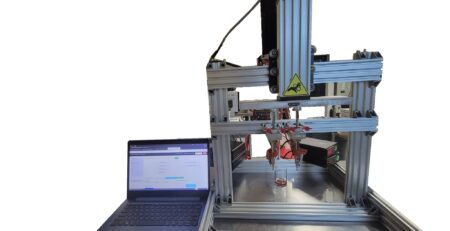Heating
Heating one’s starting material for blending is the first step to producing an oil blend. Due to the natural high viscosity of the starting material, it is necessary to heat it to liquefy it enough to mix in flavoring compounds. Once flavors are blended in, heat is also required to expedite transfer and allow reliable and expedient filling. There are many ways to skin this particular cat depending on:
- the vessel holding the material
- the amount of work the operator is willing to put up with
- the amount of time one wants to spend
- the amount of risk the operator is willing to take
For spherical flasks, a heating mantle can be utilized to provide an even heat. Most times, starting material will come in a cylindrical container like a jar, media storage bottle, or beaker. Cylinders can be heated by oil bath, heating pads, forced air, and microwave radiation.
- Oil bath is the slowest, because the vessel must be cleaned prior to transfer to prevent contamination.
- Heating pads are faster, but may overshoot and take time to assemble dissasemble
- Forced Air (as simple as a heat gun) can be very fast, but if not properly preformed can overheat cannabanoids. This is also the least uniform heating method.
- Microwave radiation is the fastest possible process. There is no risk of contamination with this method. There are two disadvantages to this method. (1) Short bursts (10-25 seconds) must be utilized to prevent overheating and (2) the equipment will take unavoidable damage over time. This is due to the magnetron being tuned for water and not oil.




Leave a Reply